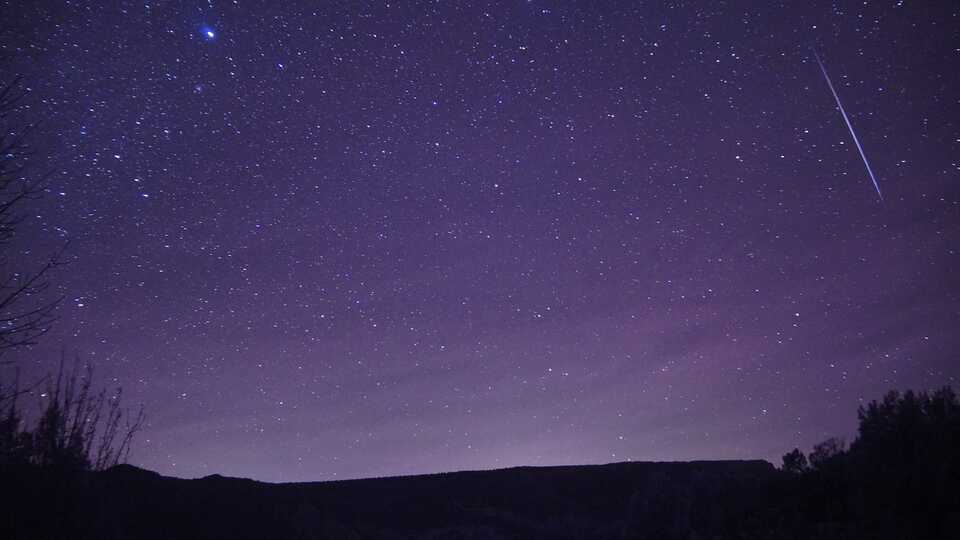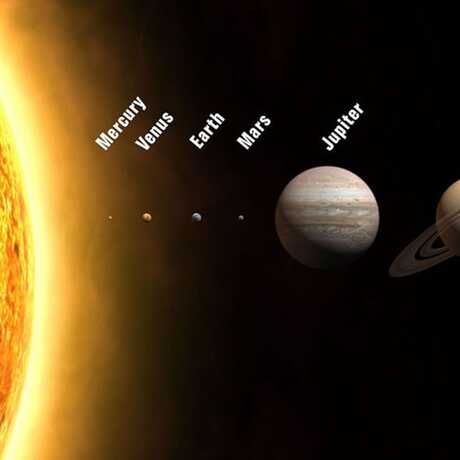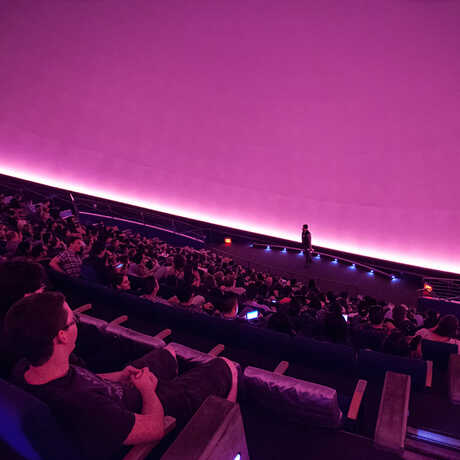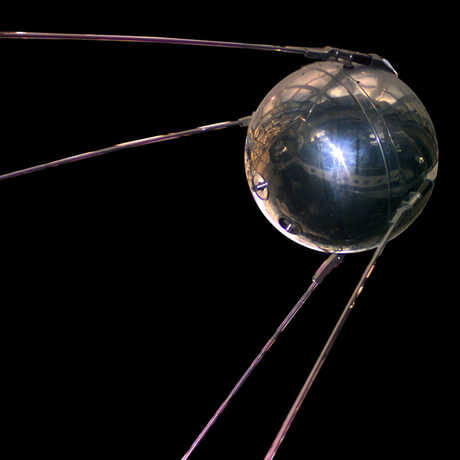The Moon begins the last quarter of its orbit since new, rising between 2-2:30 am local time, located against the stars of Sagittarius the Archer. By sunrise, it's due south and is visible for the rest of the morning as it slowly descends toward the west.

Geminid meteor shower, 2012 © Mike Lewinski
Know what's up. Morrison Planetarium's Skywatcher's Guide is a quarterly compendium of heavenly happenings.
April 1
April 8
New Moon at 11:21 am PT. The new Moon moves between Earth and the Sun, causing a total solar eclipse along a path that crosses the United States. Find out more about the "Great American Solar Eclipse" in Highlights and on our eclipse page.
Sighting of the first visible crescent after this new Moon marks the start of Shawwal, the tenth month in the Islamic lunar calendar. Experienced observers in the US might be able to make this challenging sighting just after sunset on the evening of the 9th.
April 15
First quarter Moon rises at noon and is visible toward the south at sunset, gradually descending toward the west-northwest and setting around 3 am.
April 21
Peak of the annual Lyrid meteor shower, somewhat obscured by the light of a waxing gibbous (almost full) Moon. Moonset isn't until 5:27 am, and with the Sun rising at 6:25 am, that doesn't leave much time for observing in dark-sky conditions. Details in Highlights.
April 23
Full Moon, also known to Indigenous Americans as the Pink Moon (after a variety of flowers called Sea Pink), the Sprouting Grass Moon, the Egg Moon, or the Fish Moon—all Algonquin names that reflect some aspect of springtime.
May 1
Last quarter Moon rises about 3 hours before dawn, located against the stars of Capricornus the Sea-Goat. Its trailing hemisphere is illuminated by sunlight, revealing the large, dark area known as the Ocean of Storms.
May 4
Peak of the Eta Aquarid meteor shower, caused by Earth's passage through dust left behind by Halley's Comet. More information in Highlights.
May 7
New Moon at 8:22 pm PT. Visual sighting of the first crescent after this new Moon marks the start of Zhul al-Qa'dah (sometimes written as Dhu'l Qi'dah), the eleventh month in the Moon-based Islamic calendar. This sighting is possible from most of the continental US after sunset on the 8th, but the extremely thin sliver of the crescent Moon can be easily lost in the twilight.
May 15
Moon reaches the first quarter and is located near the bright star Regulus in Leo the Lion.
May 23
Full Moon, also known to Indigenous Americans as the Flower Moon (Algonquin), the Panther Moon (Choctaw), and the Time When the Horses Get Fat (Cheyenne).
May 30
The Moon reaches the last quarter when it's below the horizon. When we see it next, rising at about 2 am on the morning of the 31st, it's very close to Saturn against the stars of Aquarius the Water-Carrier.
June 6
New Moon at 5:38 am PT. Sighting of the crescent Moon on the 7th marks the start of Dhu al-Hijja (also Dhul-Hijjah), the twelfth month of the Islamic calendar. This sighting may be possible from most of the world just after sunset on the 7th.
June 7
Winter solstice…on Mars. The Red Planet's north pole is tilted away from the Sun at an angle similar to Earth's axial inclination. Temperatures can plummet to as low as -195° Fahrenheit (-123° Celsius). This is when the North Polar ice cap spreads, and its growth can be observed through telescopes on Earth.
June 13
The Moon is at first quarter, located just south of the main stars forming the constellation Leo the Lion.
June 20
June solstice (on Earth) at 1:51 pm PT, marking the start of summer in the northern hemisphere and of winter in the southern hemisphere. More about the solstice is in Highlights.
June 21
Full Moon, also known to certain tribes of Indigenous Americans as the Strawberry Moon (Chippewa/Ojibway, Algonquin), the Windy Moon (Choctaw), and the Hot Weather Moon (Ponca).
June 28
The Moon reaches the last quarter during daylight hours, when it's below the horizon. The next time we see the Moon is when it rises in the east around 1 am against the stars of Pisces the Fishes.
Download Morrison Planetarium's 2024 Pocket Almanac to stay up-to-date on eclipses, meteor showers, satellite spottings, and more.

The Benjamin Dean lecture series brings the world's leading experts in astronomy, astrophysics, and more to the Academy's Morrison Planetarium.


